How it Works: Preen Garden Weed Preventers
Here's how our Garden Weed Preventers prevent weeds before they even sprout rather than killing them after they’ve already had the chance to grow.
Add these long-blooming plants to your garden for color that lasts.
Gardeners are always on the hunt for perennials that bloom for months instead of weeks. Here are five long-bloomers that deserve a spot in many gardens. Build on their flower power, and consider partnering these perennials with summer annuals in pots, window boxes, or other containers.
Calamint (Calamintha nepeta subsp. nepeta, USDA zones 5-9) is a well-behaved member of the mint family. It has minty, fragrant leaves, and starts to bloom from May well into October. The pale blue, white, or pinkish tubular flowers are small, so plant calamint in groups of three for a mass effect. Plants reach about 20 inches tall and wide, with an upright growth habit. Grow in full sun for the most flowers, although they tolerate part shade too. Calamint prefers well-drained, moist soil, but is fairly drought tolerant once established.
This perennial is a magnet for many different pollinators, including bees, butterflies, and other insects. Its flowers can be cut for bouquets, too. Just as it makes an excellent filler plant in the garden, it fills the same role in a floral arrangement.
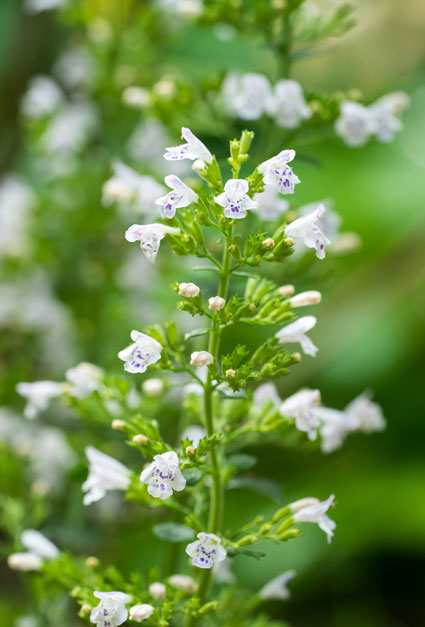
Not only does calamint bloom all summer, it is a pollinator magnet. © George Weigel
Pincushion flower gets it common name because the blooms look like a pincushion filled with pins. The most readily available cultivar in garden centers is ‘Butterfly Blue’ (Scabiosa columbaria, USDA zones5-9 ) which was the 2000 Perennial Plant of the Year; ‘Pink Mist’ is another good selection. Starting in May, blooms keep coming though the summer into September. Pincushion flowers bear 1½ to 2 inch-wide blooms on wispy stems. This plant is a tidy, 18-inch tall and wide clump grower.
Grow in full sun and routinely deadhead or snip off the spent flowers for neatness and to encourage more blooms. It is advisable to cut the stems on spent blooms to the base, to avoid a “porcupine” look! Butterflies love this plant. It is long-lasting in a vase. (There also are annual pincushion flowers, so be sure to read the plant tag or seed packet.)
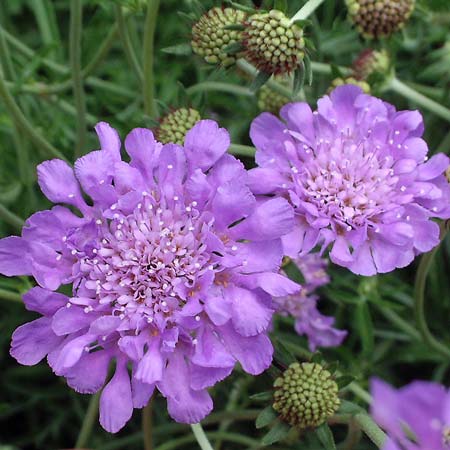
Pincushion Plant ‘Butterfly Blue’ - The flower of this long-blooming perennial recalls a pincushion stuck with pins. Photo courtesy PerennialResource.com
This Eastern U.S. native plant (Phlox paniculata, USDA Zone 4-8) is a favorite perennial for butterflies, hummingbirds, bees, and in cut-flower arrangements. Most cultivars of garden phlox are fragrant, too. Plants grow 2 to 4 feet tall (the taller cultivars may need staking) and about 2 feet wide. They bloom from June into September, with pink, peach, white, bi-color, lilac, and red flowers. (Also, there are annual phlox, so be sure to read the plant tag or seed packet.)
The best blooms are produced on plants grown in full sun, although morning sun only is fine. Deadheading spent flowers to the base encourages more blooms, helps to increase air circulation and keeps the plant looking tidy. If garden phlox has a weakness, it’s susceptibility to powdery mildew, which coats the leaves with a grayish-white, dusty fungus. In the garden center, look for varieties labeled “disease-resistant”, and plant in an area with good air circulation.
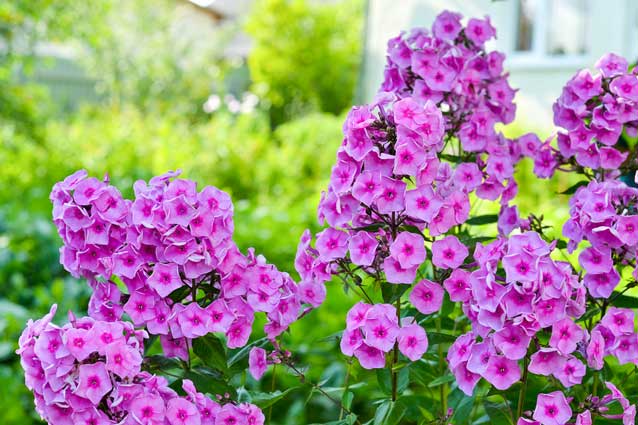
A perennial favorite, garden phlox blooms from June into September.
Very long-blooming ‘Blue Star’ (Kalimeris incisa, USDA Zones 5-9) is the most readily available selection in nurseries and garden centers. In spite of its bloom time from June into October, it is still under-used. Compact plants with clean foliage grow 1 foot tall and wide. The plants are covered with aster-like, 1 ½ -inch wide, pale blue flowers. Plant in groups of three for a dynamic show.
Japanese asters are best grown in a sunny to partly sunny spot; they thrive in average soil with dry or moist conditions. ‘Blue Star’ even does well in clay soil and rock gardens, too.
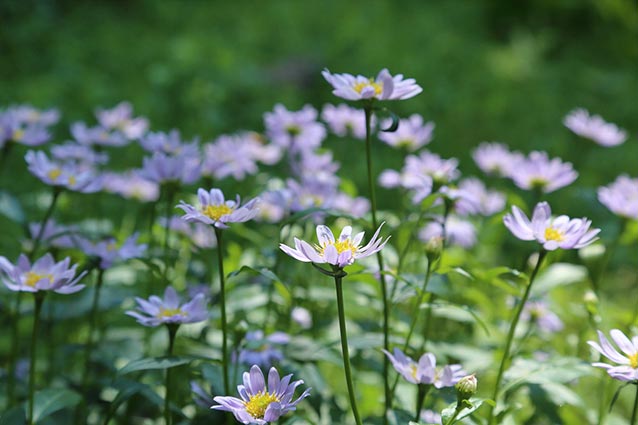
Japanese aster ‘Blue Star’ has 1 ½-inch light blue flowers throughout summer.
Flowers in winter? Why not give hellebores (Helleborus spp., USDA Zones 3 or 4 through 8) a try? So-called Christmas roses (H. niger) start blooming in late November and continue well into early May. Others (H. orientalis, or H. x hybridus) are called Lenten roses and put on a show from February into early July.
Mostly, hellebores leaves are evergreen and considered deer resistant. Flowers range from white, through greens, pinks, and purples to almost black; they are undeterred by snow. Garden centers have many selections to choose from, most of which are hybrids. It is the enduring colored sepals that give the appearance of having very long-lasting flowers. Plant them where you can see and enjoy them in winter.
Grow in shade to part shade, especially under deciduous trees. Early season bees visit the flowers for their nectar. The blooms are lovely cut for indoor arrangements or to float in a bowl.
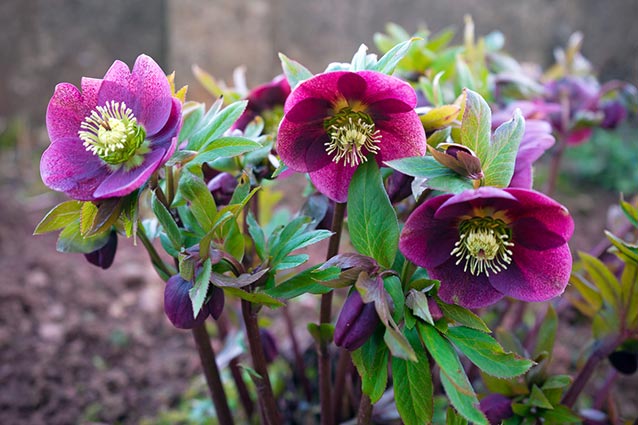
Who says flowers can't bloom in winter? Hellebores do, even in snow — and their evergreen leaves are typically deer resistant.